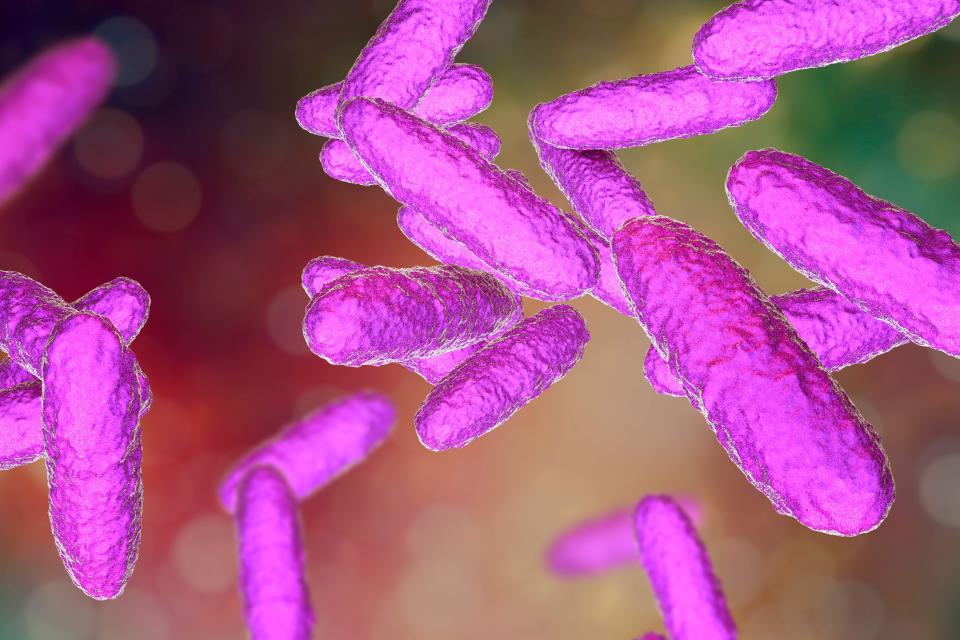Donovanosis causes ulcers, is not 'flesh-eating' | Fact check
The claim: Donovanosis is a flesh-eating sexually transmitted disease
A May 3 Facebook post (direct link, archive link) warns of a disease it claims can have devastating effects on the body.
“All jokes aside, there’s a literal flesh eating STD out there called Donovanosis, and they out there eating randoms!” reads the post. "Very sick. If you don’t believe Google it.”
The post was shared more than 100 times in a week. Another version of the claim was shared more than 3,000 times on Twitter.
Follow us on Facebook! Like our page to get updates throughout the day on our latest debunks
Our rating: False
Donovanosis is a sexually transmitted infection, but an expert told USA TODAY it does not eat flesh. Its appearance and ability to spread throughout the body if left untreated has prompted some to mistakenly refer to it as flesh-eating. The infection is rare in the U.S., with only about 100 cases per year.
Infection is rare in the US, more common in tropical or subtropical climates
Dr. Kristin Englund, a staff physician specializing in infectious diseases at the Cleveland Clinic, said the claim is false.
“The disease itself causes an ulcer, and the ulcer can grow if it’s not treated, but it’s not actually a flesh-eating bacteria,” she said.
Fact check: Monkeypox can spread to anyone through close contact
The bacteria that causes donovanosis is called Klebsiella granulomatis and can spread through close skin-to-skin contact. The painless but "beefy red" ulcers it can produce can damage the skin and spread throughout the body if left untreated, which has led to the “flesh-eating” misnomer, according to Medical News Today.
Though Englund said the infection has “been around for a very long time,” it is exceedingly rare, with only around 100 cases per year in the U.S. It is more common in places such as India and South America, which Englund said is because the bacteria thrives in tropical and subtropical climates. Still, those areas only see “sporadic” donovanosis cases, according to the Centers for Disease Control and Prevention.
The virus sparked some concern in Britain in 2021 following claims of rising cases in the country, as reported by the Washington Post. Even so, there were only between 18 and 30 cases detected per year between 2016 and 2020 in England, the outlet reported.

People at the greatest risk of contracting the infection are those having unprotected sex in areas where the disease is endemic, Englund said.
She said people should be more concerned about sexually transmitted infections such as syphilis, which is becoming more common in the U.S.
“I don’t think there needs to be widespread fear about donovanosis – it’s not really been on the rise,” Englund said. She added that the infection can be resolved with a 21-day treatment.
USA TODAY reached out to the user who shared the post for comment but did not immediately receive a response.
Our fact-check sources:
Kristin Englund, May 8, Phone interview with USA TODAY
Medical News Today, April 29, 2022, What to know about donovanosis
Washington Post, Oct. 26, 2021, What is donovanosis? So-called ‘flesh-eating’ STI sparks fears in Britain, but case numbers are low.
CDC, accessed May 10, Granuloma Inguinale (Donovanosis)
Thank you for supporting our journalism. You can subscribe to our print edition, ad-free app or electronic newspaper replica here.
Our fact-check work is supported in part by a grant from Facebook.
This article originally appeared on USA TODAY: Donovanosis is a rare infection, but not 'flesh-eating' | Fact check

